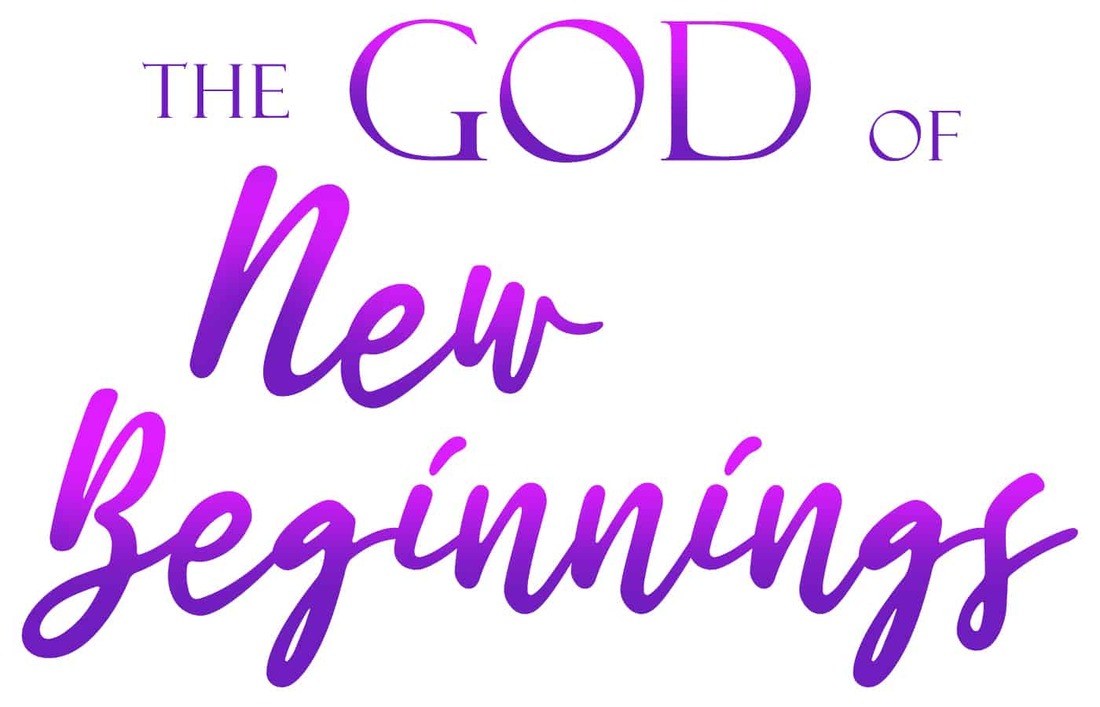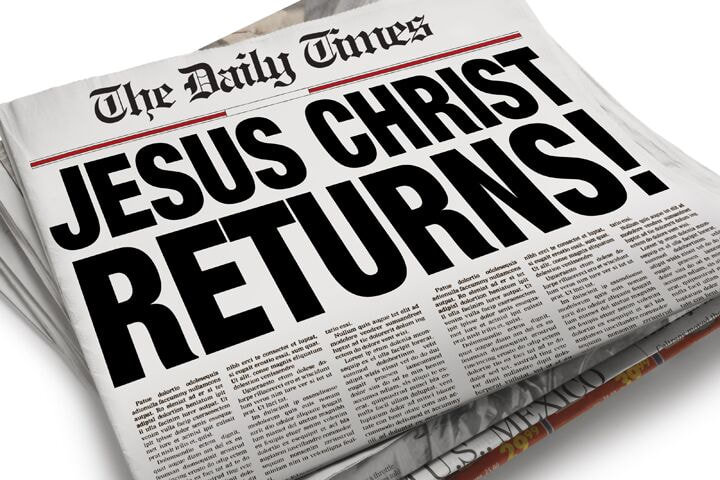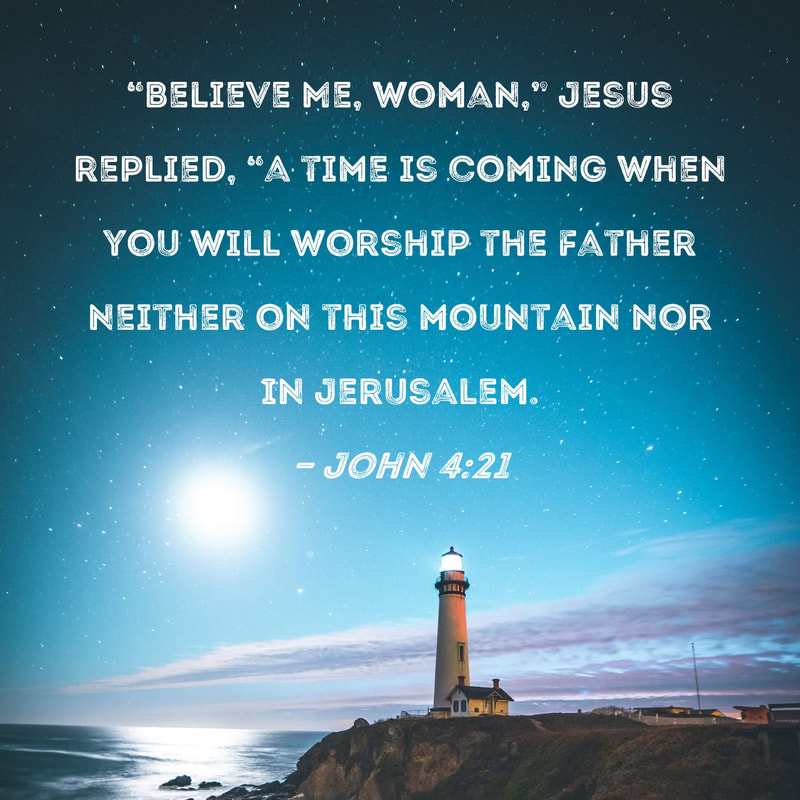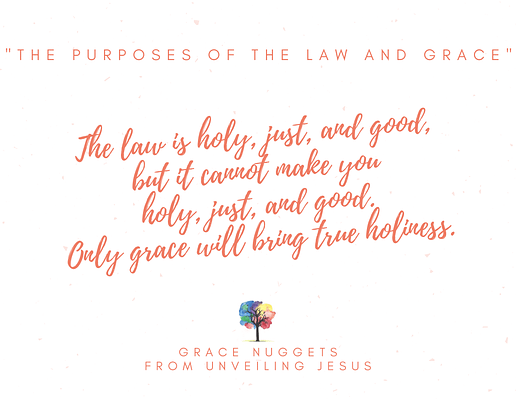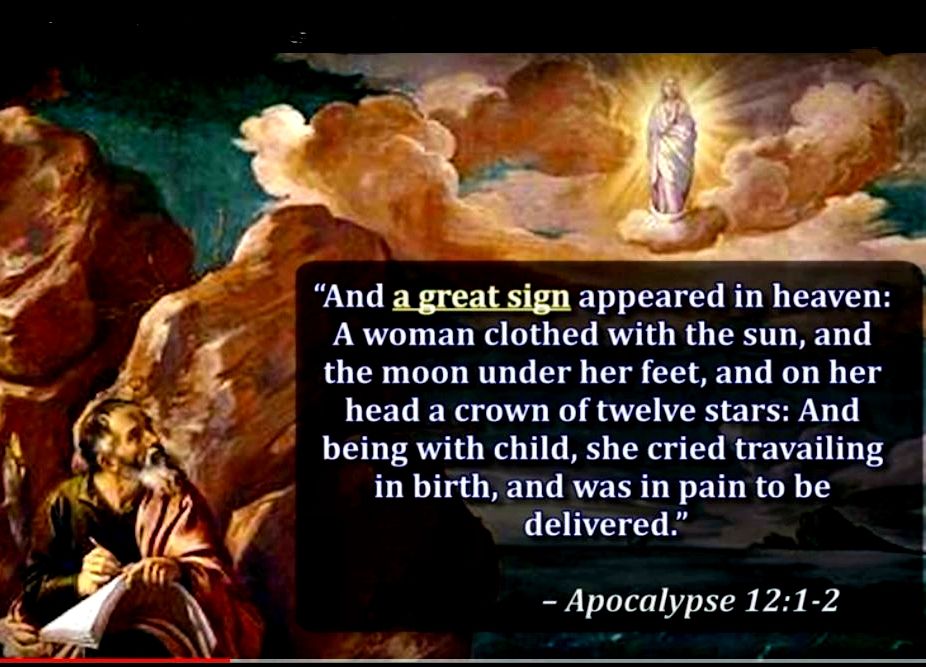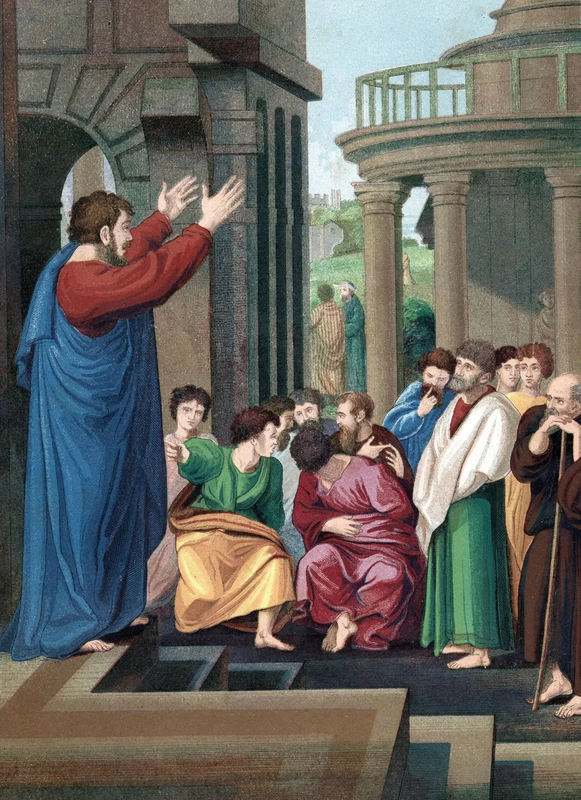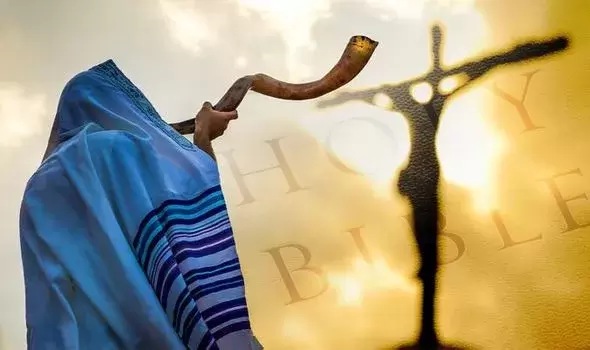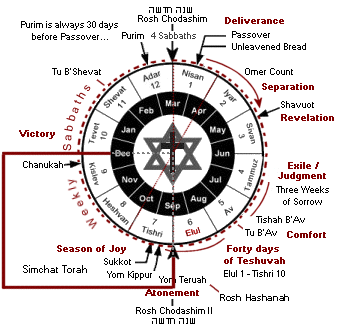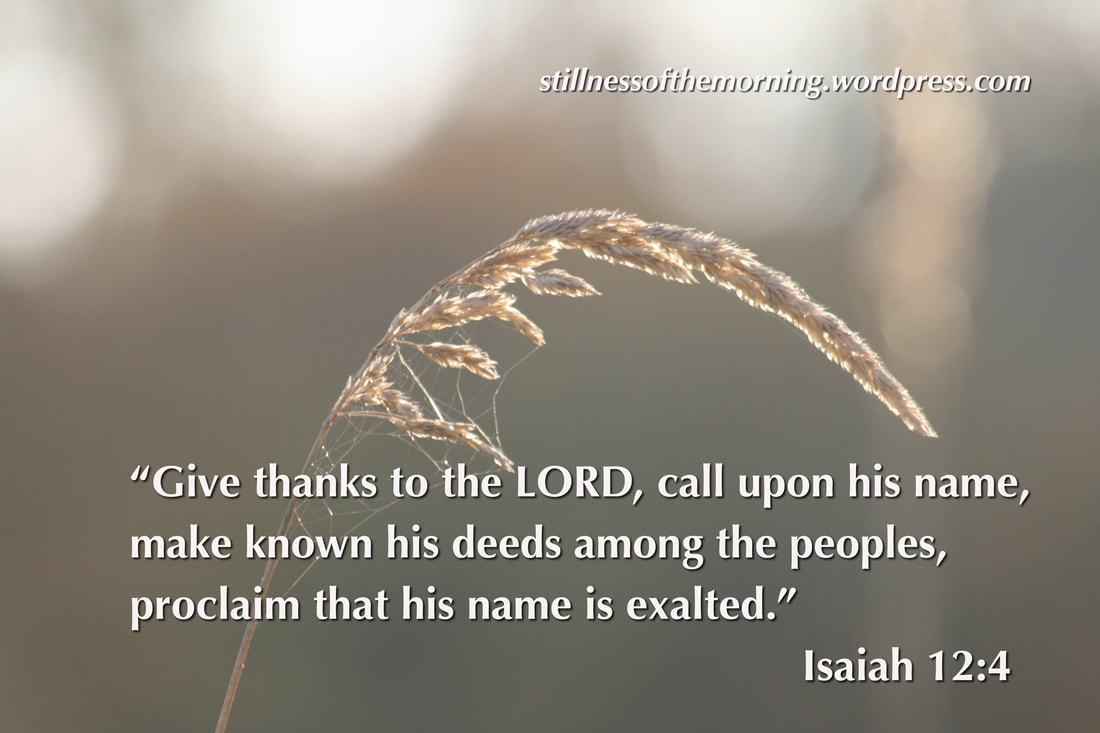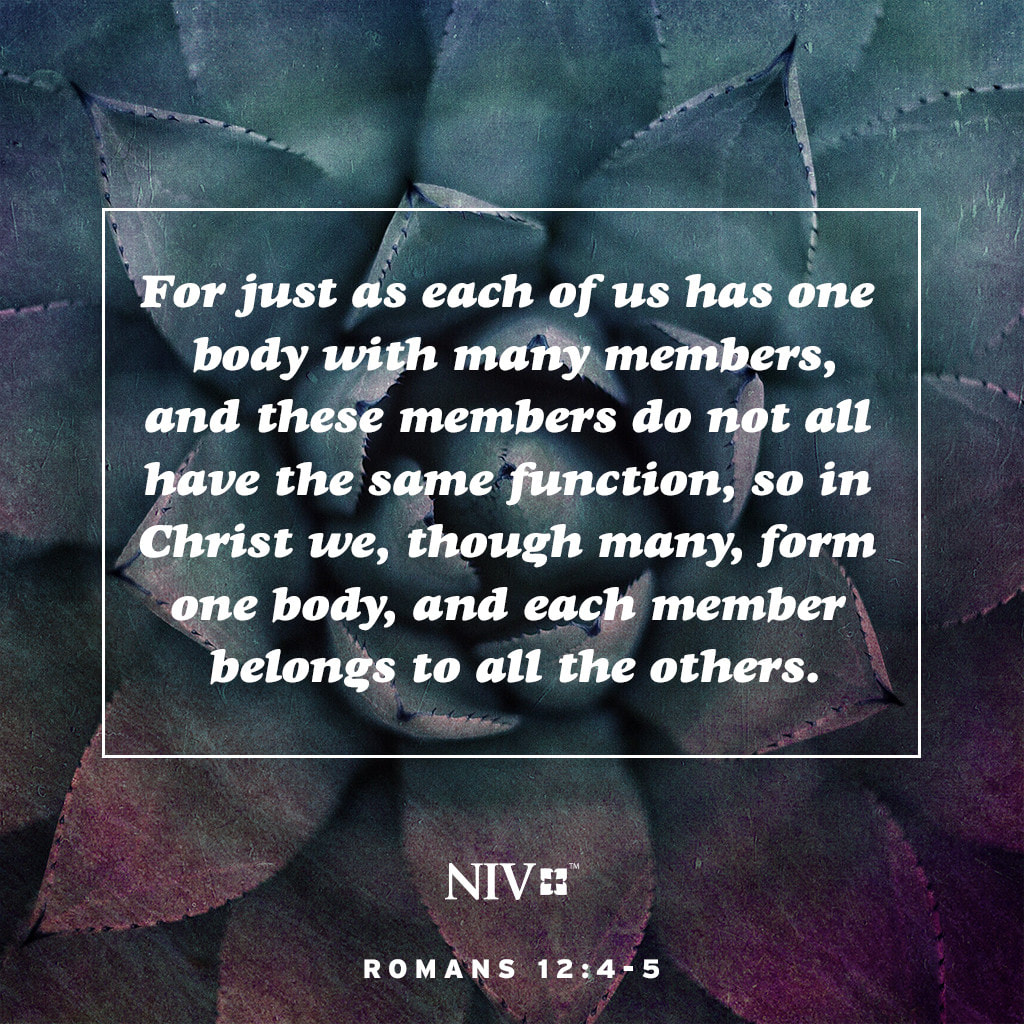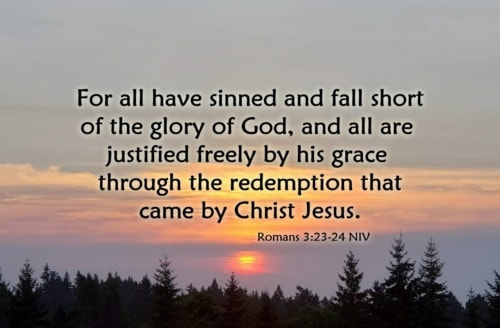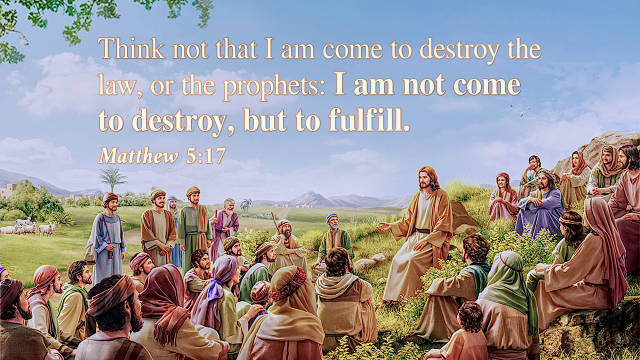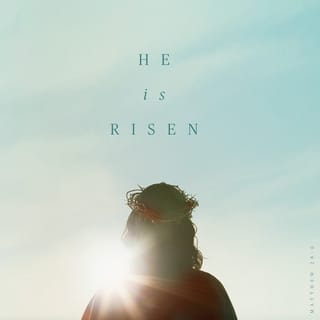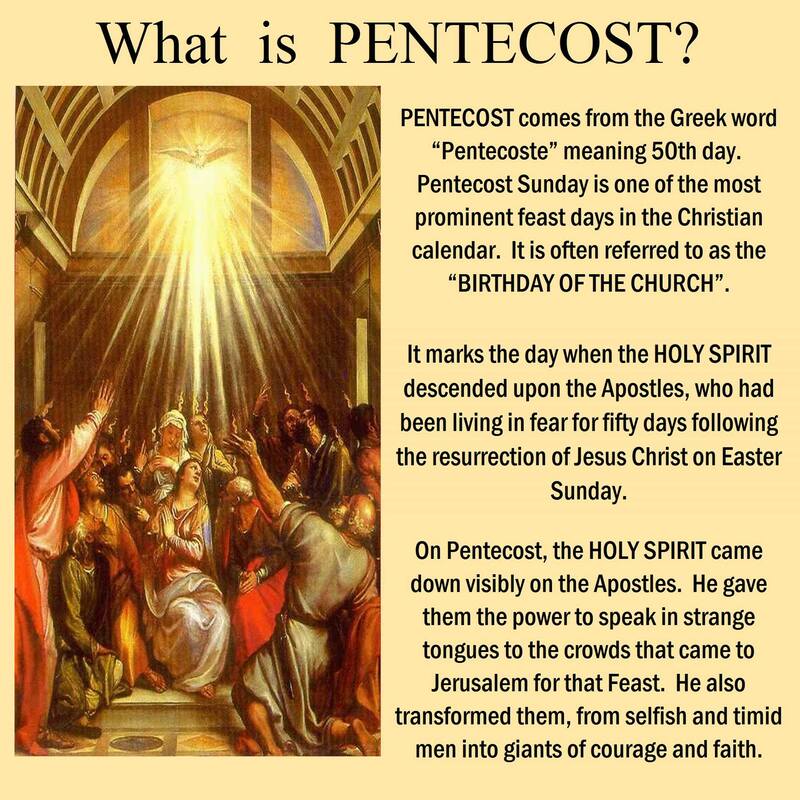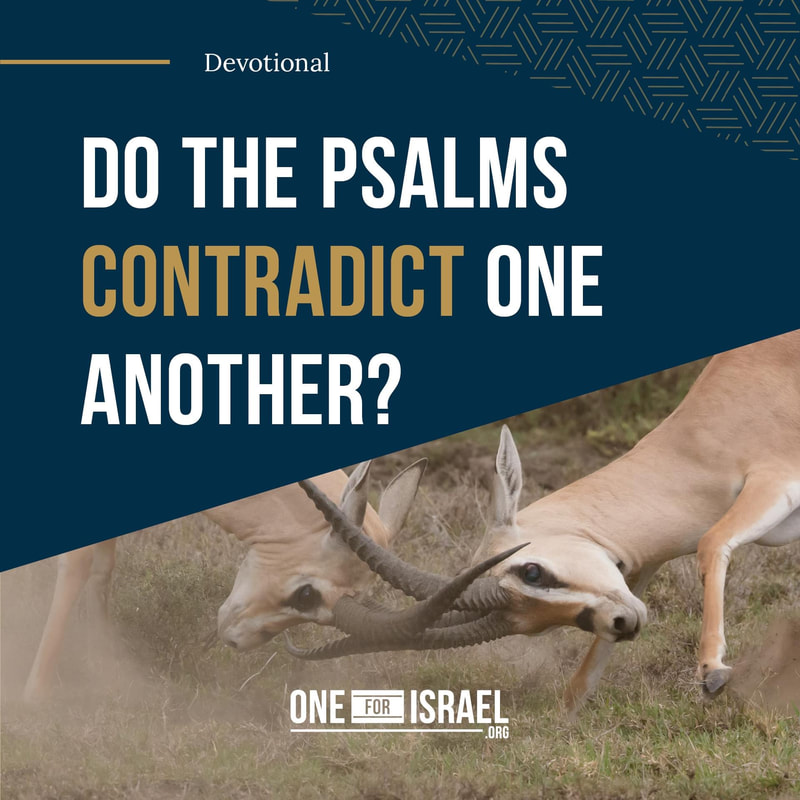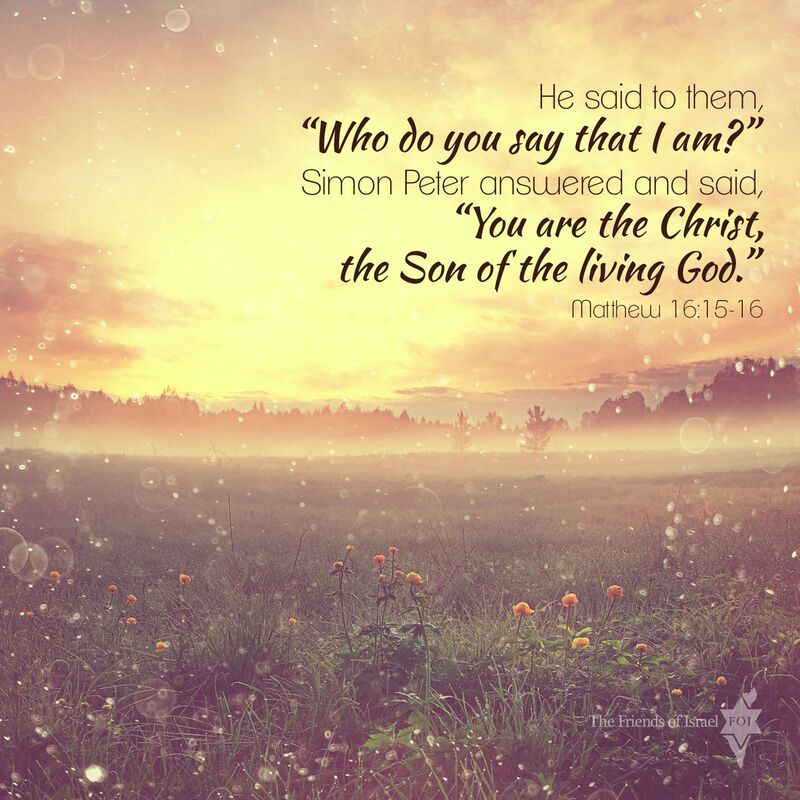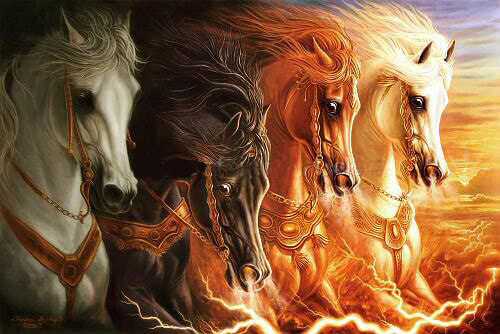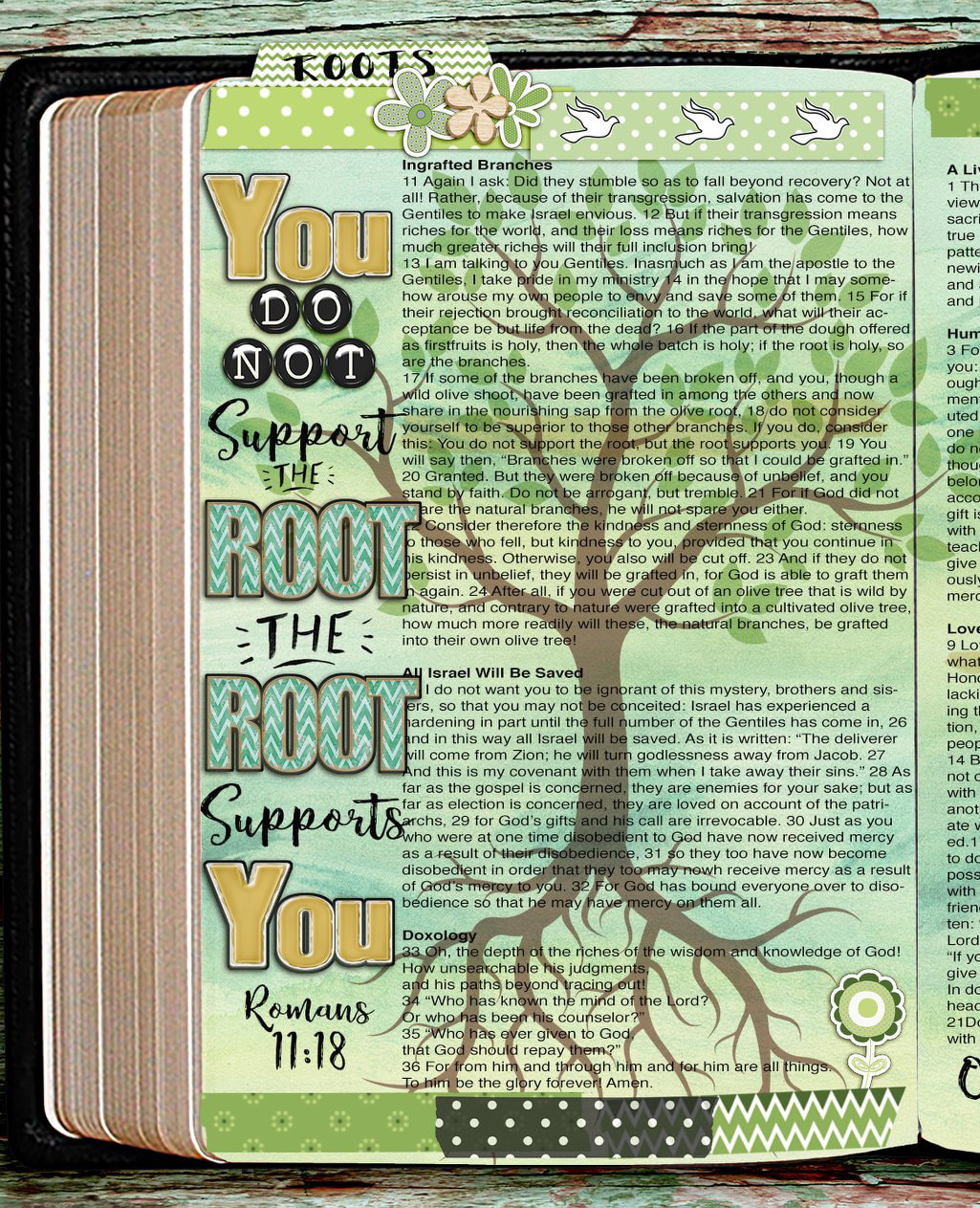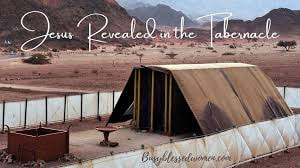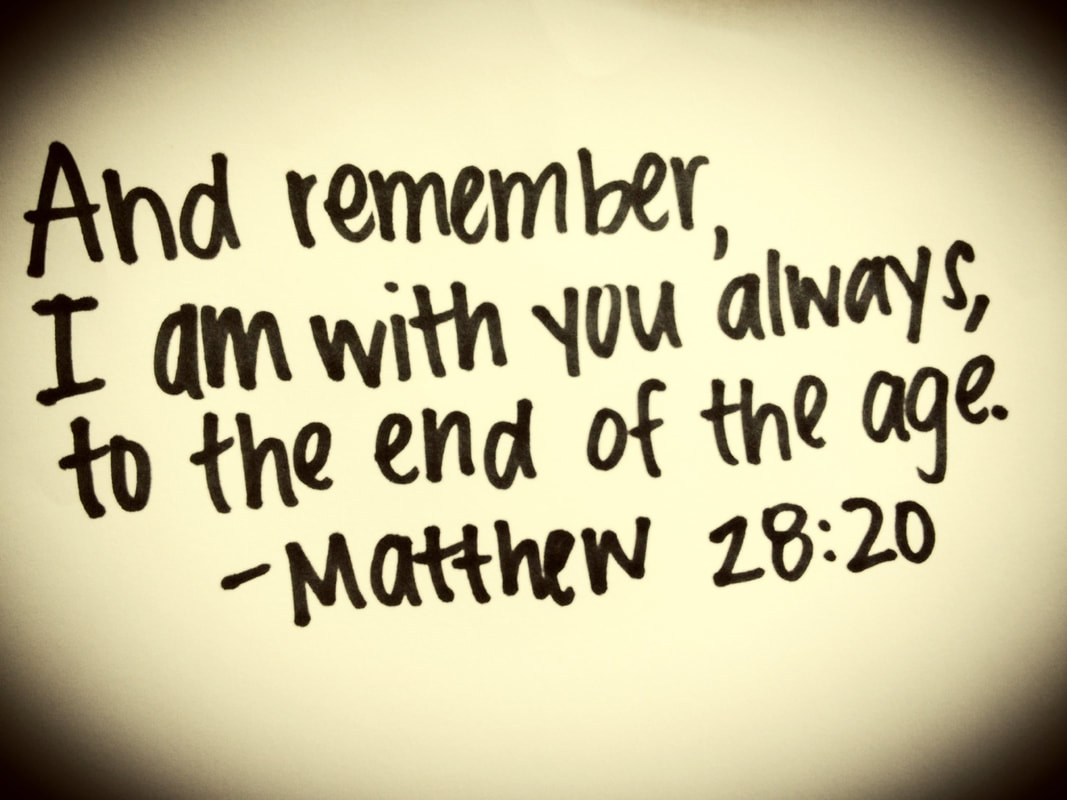Pray for Israel
The book of Revelation
is a
book of prophecy given
by
Jesus Christ to His servant
John
The Seven Signs
- Turning Water Into Wine (John 2:1-12) ...
- Healing the Nobleman's Son (John 4:46-54) ...
- Healing the Man at the Pool (John 5:1-11) ...
- Feeding of the 5,000 (John 6:1-15) ...
- Walking on Water (John 6:16-21) ...
- Healing a Man Born Blind (John 9:1-12) ...
- Resurrecting Lazarus (John 11)
Second Peter 1:20
says,
“Above all,
you must understand that
no prophecy of Scripture
came about by the
prophet’s own interpretation of things.”
In order to persuade his readers to pay attention to the gospel,
Peter affirmed that
his words were God’s words--
just as much as the Old Testament prophecies were.
Peter’s meaning in verse 20 is further explained by the context:
“We did not follow cleverly devised stories . . .
but we were eyewitnesses of his majesty. . . .
We ourselves heard this voice that
came from heaven. . . .
We also have the prophetic message as something
completely reliable. . . .
No prophecy of Scripture came about by
the prophet’s
own interpretation of things. For prophecy
never
had its origin in the human will”
(2 Peter 1:16–21).
Notice that Peter’s main point is not how to
read and understand God’s messages. Instead, he explains
the authoritative origin
and
source of those prophecies.
It was God Himself
who communicated
them through His chosen spokesmen.
The prophets (and Peter)
did not write thoughts that they
cooked up out of their own minds,
but they passed on truth that came
directly from God.
As Peter puts it,
they “spoke from God as they were
carried along
by the
Holy Spirit”
(verse 21).
Peter’s intent was to urge his readers to take his message about
Jesus seriously, as he says in verse 19,
“You [therefore] will do well to pay attention
to [God’s message through me],
as to a
light shining in a dark place.”
Peter’s account of Jesus was
straight from God.
Since the Bible’s words express God’s thoughts, not man’s,
it is important that we respect them enough to
study them and grasp what He wants
us to understand as we are interpreting Scripture.
Revelation 19:10 makes a bold statement regarding
the relationship between
prophecy and Jesus Christ:
The testimony of Jesus
is the spirit of prophecy
The book of Revelation
is a book of prophecy
given by
Jesus Christ to His servant John
(Revelation 1:1).
The term revelation refers to a
revealing or the making known of something
that was previously unknown.
Revelation is like pulling back
a veil to show what’s behind it or
unwrapping a present
to see what’s inside.
What is prophecy, then?
Simply put,
prophecy is communication
from God to mankind.
Some prophecy can be speaking of
future events, and
is a book of prophecy given by
Jesus Christ to His servant John
other prophecy might not be.
Prophets were utilized as a mouthpiece for God--
they listened to God and
then conveyed God’s message to the masses.
Some examples of prophets
are Elijah, Isaiah, Moses, and Jonah.
In the context of Revelation 19:10,
John has seen the fall of the evil world system called
Babylon the Great (Revelation 18).
A great multitude in heaven is celebrating and
singing praise to God because of that judgment
(Revelation 19:1–3)
and because it is
now time
for the wedding supper of the Lamb
(verses 6–8).
An angel says to John,
“Blessed are those who are invited to the wedding supper of the Lamb!” (Revelation 19:9).
At this proclamation, John falls to worship at the
feet of the angel who is communicating this prophecy,
but the angel insists John rise to his feet, for he is but
“a fellow servant”
(Revelation 19:10; cf. Colossians 2:18).
In response to John’s wrongful worship,
the angel says, “See that you do not do that! . . .
Worship God!
For the testimony of Jesus is the
spirit of prophecy”
(Revelation 19:10, NKJV).
It is critical to understand that this statement is a response to John’s intention to worship the angel. Because of the construction of the clause in the original language (Greek), there are three common understandings of the testimony of Jesus is the spirit of prophecy:
1. Jesus is the substance of all prophecy,
or, put another way, Jesus is the common
theme among all prophecy.
2. All true prophecy bears witness about Jesus.
Therefore, all prophecy should
cause us to worship Him alone.
3. The message or testimony given by Jesus is the essence
of true prophecy.
Jesus is the Word, and no prophecy comes to
us except through Him, ultimately
pointing to God as the
source of all true prophecy.
The NIV translates the angel’s statement as
“It is the Spirit of prophecy who
bears testimony to Jesus.”
The NLT’s wording
is
“The essence of prophecy is to
give a clear witness for Jesus.”
The wording of both these translations prefers one of the first two interpretations, above. The third interpretation, however, seems to fit best within the context of Revelation 19:10. John is not to worship the angel but God alone. Since John was worshiping the angel in response to the prophecy given, the angel ensures that
John understands
Jesus is the source of the communication
and He alone
is worthy of the worship
(cf. Luke 4:8; Acts 14:11–15).
Following the angel’s command to John, we ought to worship God alone.
We are to worship not the purveyor
of the message but
the
Source of the message.
While God has made many beautiful things,
such as angels,
He is alone worthy of our praise
(cf. John 17:3; 1 Timothy 1:17; 6:15; 1 Samuel 7:4).
In Daniel 7 the prophet records a night vision
that God gave him concerning four world empires,
symbolized as four beasts
(Daniel 7:1–14).
The four empires are the same as Nebuchadnezzar
saw in his dream in Daniel 2, although in that dream they
are pictured as various metals in a statue.
Daniel’s vision assures us that the world’s empires have a certain amount of authority for a certain length of time, but they will all pass away, and
"the holy people of the Most High will receive the
kingdom and will possess it forever—yes, for ever and ever”
(Daniel 7:18).
The vision of the four beasts troubles Daniel,
and he wonders what it means until an angel explains it to him
(Daniel 7:15–27).
Even then, the vision and its interpretation continue to cause Daniel distress: “I, Daniel, was deeply troubled by my thoughts, and my face turned pale, but I kept the matter to myself” (verse 28).
Daniel’s vision of the four beasts begins with a windy night and a troubled sea: “In my vision at night I looked, and there before me were the four winds of heaven churning up the great sea” (Daniel 7:2). As Daniel watches, “four great beasts,” each different from the others, emerge from the dark waters (verse 3).
The first
of Daniel’s four beasts is “like a lion, and it had the wings of an eagle” (Daniel 7:4). As Daniel watches, the wings are torn off the beast, and the creature stands erect like a man and a human mind is given to it. Later, the angel who interprets the dream tells Daniel, “The four great beasts are four kings that will rise from the earth” (verse 17). This first beast is representative of King Nebuchadnezzar of Babylon. Its rise to human-like status reflects Nebuchadnezzar’s deliverance from a beastly existence and his insight into the true nature of God (Daniel 4:34–35).
The second
beast in Daniel’s vision is “like a bear. It was raised up on one of its sides, and it had three ribs in its mouth between its teeth” (Daniel 7:5). A voice tells the second beast to devour flesh until it is satisfied. This beast represents the Medo-Persian Empire; the raising up of one side of the creature indicates that one of the kingdom’s parts (Persia) would be dominant. The three ribs in the creature’s mouth symbolize nations that were “devoured” by the Medes and the Persians. These three conquered nations are known to be Babylon, Lydia, and Egypt.
The third
of the four beasts is “like a leopard,” except it has four bird-like wings on its back and four heads (Daniel 7:6). This beast is given authority to rule. The third beast represents Greece, an empire known for the swiftness of its conquests. The four heads are predictive of the four-way division of the empire following Alexander the Great’s death. Daniel’s vision of the ram and the goat gives further details of the second and third kingdoms (see Daniel 8).
The final beast
that Daniel sees rising from the sea is the
most dreadful
—“terrifying and frightening and very powerful”
(Daniel 7:7).
This fourth beast has “bronze claws” (verse 19) and
"large iron teeth;
it crushed and devoured its victims and trampled
underfoot whatever was left” totally annihilating its prey
(verse 7).
The fourth beast has ten horns.
This creature represents the Roman Empire,
a mighty kingdom that indeed crushed all its foes.
So, Daniel’s vision of the four beasts provided a prophetic look at future world events. Looking back from our perspective, we see these events as world history and can easily see the correlation between each beast and a world empire. However, there was more to Daniel’s vision, and some of it is yet future, even for us.
Daniel’s attention is drawn to the destructive fourth beast, and he ponders the meaning of its ten horns. Then, a smaller horn begins to grow from the midst of the ten. As the little horn emerges from the beast, three of the original horns are plucked out by the roots. Daniel sees that the little horn
has “eyes like the eyes of a human being and a mouth that spoke boastfully”
(Daniel 7:8).
The proud, boastful words of the little horn continue until the Ancient of Days sets up a day of judgment (verses 9–10).
At that time,
“the beast was slain and its body destroyed
and thrown into the blazing fire”
This is in contrast to the fate of the other three beasts,
who lost their authority but were not immediately destroyed
(verse 12).
After the fourth beast is killed and its body burned, a “son of man” comes from heaven in the clouds. “He approached the Ancient of Days and was led into his presence” (Daniel 7:13). This man is given “authority, glory and sovereign power” (verse 14), and all the nations of earth worship him. The kingdom he rules is everlasting and indestructible.
As the interpretation of the vision is given to Daniel, the prophet asks specifically about the fourth beast and its horns (Daniel 7:19). The angel explains: the beast’s ten horns are ten kings who will arise from that kingdom (verse 24). The little, imposing horn with the eyes and mouth of a human represents a later king; before him three of the original kings will be subdued. This evil king “will speak against the Most High and oppress his holy people” (verse 25). He will seek to change times and laws, and he will exert oppressive power over God’s people for three and a half years. This world leader that Daniel saw is the Antichrist, the “ruler who will come” who sets up the abomination in Daniel 9:27.
Given the fact that the Antichrist emerges from the fourth beast leads us to surmise that, in the end times, there will be a “revival” of the Roman Empire, featuring a coalition of ten world leaders. The Antichrist will take his position of leadership at the expense of three of those leaders, and he will eventually wield global authority. A true tyrant, the Antichrist will demand worship and seek to control all aspects of life (see Revelation 13:16–17).
The little horn
of Daniel 7 is the first beast of Revelation 13.
Notice that the beast in Revelation also has ten horns, and John describes it as resembling “a leopard, but [it] had feet like those of a bear and a mouth like that of a lion” (Revelation 13:2). In other words, the beast of Revelation contains elements of all of Daniel’s beasts.
Like Daniel’s fourth beast, John’s beast speaks proudly
and oppresses God’s people for three and a half years
(Revelation 13:5–7).
The good news is that the reign of
the Antichrist is limited:
forty-two months, and no more. Then, God promises to judge the little horn. “The court will sit, and [the little horn’s] power will be taken away and completely destroyed forever” (Daniel 7:26). Or, as John saw it, “The beast was captured, and [was] thrown alive into the fiery lake of burning sulfur” (Revelation 19:20). The Son of Man will rule forever.
It is interesting to compare Daniel’s vision of the four beasts with
King Nebuchadnezzar’s dream of a large statue.
Both visions symbolize the same kingdoms of the world. In Daniel 2, the king dreams of the earthly kingdoms as “an enormous, dazzling statue, awesome in appearance” (Daniel 2:31).
However, Daniel sees the same kingdoms as hideous beasts (Daniel 7). So, we have two very different perspectives on the kingdoms mankind builds. The rulers of the world see their kingdoms as imposing, artistic monuments fashioned of valuable metals. However, God’s prophets view the same kingdoms as unnatural monsters.
Daniel’s vision of the four beasts warned Israel
that there would be a procession of enemies
and world rulers holding authority over them;
however, they should not lose heart.
In the end, God is in control, and the
Messiah to come
will defeat the
kingdoms of this world and
establish
His throne forever
(Daniel 2:44; 7:13–14; Revelation 11:15).

 RSS Feed
RSS Feed



